Best Sheet Music download from our Library.
Jazz Freedom
There is a maxim about free jazz that says, “You can play anything, but you can’t play just anything.” This expresses, in the form of a contradiction, the opposition between freedom and responsibility in jazz improvisation.
The first part of the saying, “You can play anything,” declares the improviser’s negative freedom to not have to play what a composer requires. The second part of the saying, “But you can’t play just any-thing,” means that it is positive freedom and an affirmative purpose that fully realizes the opportunity for which negative freedom sets the foundation.
The saying states, in other words, that one should not do something merely for the sake of doing it, and that there is responsibility associated with one’s freedom. An improviser can meet the responsibility to not play anything just to play it if he or she plays what is authentic and honest as determined by the particulars of the musician’s individual character and personality.

Not playing something just to play it is a higher-level proscription about the purpose of one’s freedom, a proscription about the manner in which one is not proscribed, a statement about the responsibility of one’s freedom.
The improviser can thereby express both freedom and responsibility. As an example, consider the musical technique of banging both hands on the keyboard of a piano. There are times in which such a technique may be responsible, and times in which it may not be appropriate. For instance, Michael Brecker composed a piece called “Nothing Personal” in which one note is notated as an undefined pitch.
One might argue that playing something in an improvisation for no purpose—just to do it—is a purpose itself: a meta-purpose, or a purpose attached to a lack of purpose. This is similar to saying, “Moderation in all things, including moderation.”
This allows for immoderate things, because if moderation is done in moderation, then occasionally some actions will not be moderate. If one always improvises with a purpose, then, sometimes, one’s purpose might be to have no purpose. Sometimes it might be OK to do something just for the heck of it, but we cannot say that doing so was an expression of responsibility, even if it was acceptable in a larger sense. The meta-purpose of having no purpose may be a legitimate part of jazz, but it does not express responsibility.
There is another way in which responsibility coexists with freedom. A choice is always subject to evaluation, and this means that, except for a perfect improviser (who does not exist), some choices will be evaluated as less worthy than others. Therefore, freedom is not always devoid of costs: stated as a contradiction, freedom is not necessarily free.
If one is merely choosing between vanilla and chocolate ice cream, there is no significant cost to that choice, but if we appreciate some improvisations because they are clever, fascinating, humorous, or inspiring, we must also be ready to reject some improvisations because they are plain, uninteresting, or boring.
Unless one suggests absolutely no standards, and even if such standards as cleverness, fascination, humor, or inspiration may be intersubjectively determined by the audience and the musicians, failing those standards is part of the landscape. Even before a choice is made, the risk of making a bad choice is implicit.
There are musical and aesthetic consequences of choices in jazz improvisation, and when improvisers do not make optimal choices, regardless of who decides what is optimal or how they decide, the improviser takes responsibility for his or her failed choices as much as the credit for successful ones.
The improviser’s freedom to make choices and the improviser’s responsibility to face the subsequent evaluation of those choices are in dynamic tension. Freedom is fully present because the improviser has the sovereignty to choose to play anything, and responsibility is fully present because, once the choice is made, a negative (or positive) evaluation of the choice is possible.
The improviser takes implicit responsibility for a choice at the same time that his or her freedom is being exercised through that choice. The tension in the opposition between freedom and responsibility is most apparent when an improviser takes risks. An improviser might approach the responsibility for bad choices by playing it safe, by not making any risky choices.
If an improviser doesn’t play it safe, however, and fully exercises his or her freedom, freedom and responsibility are in dynamic tension: a musical choice is more free when it is not limited by a potential negative evaluation of the choice, yet at the same time the musician must accept responsibility for the cost of a potential negative evaluation of that choice.
The contradiction between playing freely, as if there are no consequences, when there are consequences and responsibility for playing freely, places freedom and responsibility in dynamic tension.
Both are opposed to each other, in contradiction, yet fully expressed. Taking risks in improvisation may or may not be a wise strategy in any particular case, but when such an approach is taken, the improviser negotiates the contradiction between freedom and responsibility.
DISCIPLINE IS THE FOUNDATION OF FREEDOM
There is an opposition between the responsibility of discipline and the freedom that discipline enables. To be able to speak a language, for instance, one must have enough competency to be able to use the language effectively, and this implies standards to which one is responsible. It is through discipline that one achieves such competency and meets those standards, which enable the freedom to say anything in that language.
It is genetics that gives us the ability as babies to attempt, through trial and error, to imitate the language of parents and thereby gain competency as a native speaker.
For jazz improvisation, it is the self-imposed discipline of practice on an instrument that creates the technical facility and familiarity with the idiom that allows the improviser to use freedom to be creative.
Even though creativity and innovation are a part of jazz, jazz is also an idiom with certain competencies. The discipline that is required to become proficient in the language of jazz is the foundation on which creative efforts rest. It is when one is in the process of acquiring competency in jazz as a student that the contradiction between discipline and freedom is most evident. A jazz student who doesn’t wonder, “Why are parts of my study of improvisation so unimprovised?” isn’t paying attention.
Perhaps a closer analogy between language and jazz is poetry. In general, one must be competent with the grammar of English to write English poetry. Even in free poetry, poets generally know the rules of the language in which their free poetry is written. They know when they are breaking the rules of grammar and so understand the effect of what they write.
Free jazz and bebop are two styles from jazz history that illustrate this approach to some extent. In every area—repertoire, relation to the audience, rewards, and musical goals—free jazz and bebop musicians tended to place art over the audience.
Wynton Marsalis has articulated a variation on that approach:
“I’m going to do everything in my power to get the public to understand the real significance and beauty of the music, not by watering it down, but by get-ting to such a place in my art that it will be obvious to all who listen that I’m coming from a great tradition.”
Rock musician Frank Zappa has also adopted this model: “If [people in the audience] like [my music], fine. If they don’t, they can go out and buy another record.”
This approach holds that, by being authentic and hon-est with oneself, the artist has the best chance of creating valuable art that may then be recognized by an audience, or at least recognized by the audience that values sincere and authentic art.
Please, subscribe to our Library.
If you are already a subscriber, please, check our NEW SCORES’ page every month for new sheet music. THANK YOU!
“[The jazz man] must subordinate and integrate his musical personality, as ex-pressed through his instrument, into the general group, and he must do this with no score or conductor to guide him. On the other hand, as a soloist, he must produce startlingly distinctive sound patterns which are better, if possible, than those played by any other member of the group. How is this to be done? . . .
The soloist must be unique, personal, and “progressive,” but in order to meet the other criterion of the esthetic, he must be understood by others who know the idiom. This means, of course, a continual advance into abstraction and esotery, so that contemporary jazz is always musical casuistry, forever seeking new ways to rationalize the impossible.1
The jazz esthetic is basically a paradox, tragic in that it is ultimately unrealizable. The comprehensibility of traditionalism and radical originality are irreconcilable.”
William Bruce Cameron, “Sociological Notes on the Jam Session,” Social Forces 33 (1954): 179.
Learning Jazz
It should not be unexpected that students of jazz, once they have progressed sufficiently, begin to question the tradition of jazz by improvising music that runs counter to that tradition and that might therefore risk censure from their teacher. The creativity and personal expression that jazz promises, when carried to its logical conclusion, can lead to a rejection of the boundaries and definition of the tradition of jazz that the student initially must absorb.
This situation is similar to that of separation or individuation of adolescents, in which they forge their own identity that is separate from that of their parents or family (their tradition).
Especially at the initial stages of developing one’s own identity as a jazz improviser, one is faced with the question of how to achieve two contradictory goals: faithfulness to the tradition, as might be required by a teacher or mentor, and creatively transforming that tradition into something that expresses the uniqueness of one’s own musical personality. The student must learn how to keep tradition and creativity in dynamic tension.
That growth as a jazz musician is not necessarily a straight line from simple to complex illustrates how the opposition between tradition and creativity can be negotiated.
Advanced jazz students are sometimes eager to master the most dissonant forms of harmony.
Charlie Parker’s harmonic style, while controversial during his career in the 1940s and 1950s, is only the starting point for today’s jazz students. Some students, in my experience, mistake topics such as advanced harmony, or harmonic styles that occur later in jazz history, as the only ones appropriate for advanced study.
An advanced study of jazz, however, might ask the jazz student to imitate the style of Louis Armstrong, which is not as harmonically complex when compared to Charlie Parker or later musicians. To be able to be creative within the more restricted boundaries of Armstrong’s traditional harmony requires the student to negotiate the opposition between the closely drawn boundaries and the creativity that is a part of jazz.
There is a dynamic tension between tradition and creativity for jazz educators.
Even jazz teachers are not immune to the authoritarianism that teaching encourages. One example of the authoritarian aspects of jazz education is the prominence of the big band in jazz education, which is out of proportion to its place in jazz history.
There are several reasons why the big band is so prominent in jazz education. Not only does the greater size of the big band (sixteen to twenty) increase student enrollments compared to combos and thus help fund jazz programs, but the big band requires more standardization and exercise of authority than jazz combos.
It is usual for educational big bands to have a director (the authority) in front of the band, directing rehearsals as well as performances, while it is rare for a teacher to be onstage with a student combo.
Most importantly, be-cause the horns in a big band—the trumpets, trombones, and saxophones—are often playing the same rhythms, many details of their performance that might be decided individually and spontaneously in a combo, such as articulation, intonation, rhythm, and swing, are usually predetermined authoritatively by the director.
Some necessities of education—standardization, definitions, and clear rules—are in opposition to the openness and creativity in jazz. These necessities can be risked by teaching creativity as part of jazz. Dacey and Lennon note that “the creative teacher is involved in discovery, risking, pushing the limits, and taking a step into the unknown. This is serious business—dangerous business.
“When you challenge students to be creative, you lose control.” Such loss of control is sometimes not a congenial fit with the demands of the educational bureaucracy.
Standardization in education is not, however, in any sort of conflict with tradition in jazz; in fact, the two realms are well suited for each other. They both depend on rules, definitions, and standards.
So the authoritarian aspect of education is itself in dynamic tension when applied to jazz: authoritarianism, on one hand, is well suited to teaching the jazz tradition, but, on the other hand, is ill-suited for encouraging students to be creative, certainly for stimulus of freedom (thinking outside the box), and perhaps for stimulus-bound freedom as well.
Competent jazz educators will manage this dynamic tension successfully, especially if they are jazz musicians themselves and have some sense of the contradiction.
Browse in the Library:
| Artist or Composer / Score name | Cover | List of Contents |
|---|---|---|
| A dozen A Day Book 1 Technical exercises for the piano |
 |
A dozen A Day Book 1 Technical exercises for the piano |
| A dozen A Day Book 2 Technical exercises for the piano |
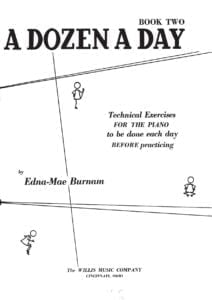 |
|
| A dozen A Day Book 3 Technical exercises for the piano |
 |
|
| A dozen A Day Book 4 Technical exercises for the piano |
 |
|
| A dozen A Day Mini Book Technical exercises for the piano |
 |
|
| A dozen Day Preparatory Book Technical exercises for the piano |
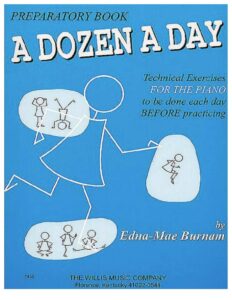 |
|
| A Farewell To Arms Love Theme From A Farewell To Arms film by Mario Nascimbene Francis Webster 1957 |
 |
|
| A Felicidade (Antonio Carlos Jobim) | ||
| A Festival Gathering Of Carols (Musescore File).mscz | ||
| A Fine Frenzy – Almost Lover |
 |
|
| A Fistful of Dollars (Ennio Morricone) | ||
| A Generative Theory Of Tonal Music by Fred Lerdahl and Ray Jackendoff (Book) |
 |
|
| A Guide To Guitar Chords by Curt Sheller |
 |
A Guide To Guitar Chords by Curt Sheller |
| A Guide To Musical Analysis by Nicholas Cook (Book) |
 |
|
| A Handbook Of Piano Playing (By Eric Hope) (1962) |
 |
|
| A Heart Full Of Love (Musescore File).mscz | ||
| A love suicide (Yutaka Minobe) | ||
| A Love Supreme (by Ashley Kahn) The story of john Coltrane’s signature album (Book) |
 |
|
| A Media Luz (Edgardo Donato) | ||
| A Modern Approach To Jazz Rock And Fusion For Guitar with Tablature |
 |
A Modern Approach To Jazz Rock And Fusion For Guitar |
| A Modern Method For Guitar (Berklee) 1 by William Leavitt |
 |
A Modern Method Berklee 1 |
| A Modern Method For Guitar (Berklee) 2 by William Leavitt |
 |
A Modern Method For Guitar (Berklee) 2 |
| A Modern Method For Guitar (Berklee) 3 by William Leavitt |
 |
A Modern Method For Guitar (Berklee) 3 |
| A MOZART REINCARNATED (Ennio Morricone) |
 |
|
| A Mozart Reincarnated by Ennio Morricone (Musescore File).mscz | ||
| A New Approach To Ear Training by Leo Kraft (BOOK) |
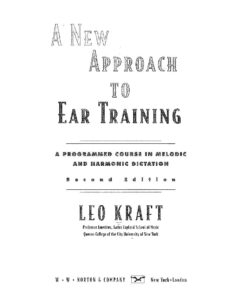 |
|
| A New Approach To Piano Technique (By Ruth A. Dickerson) (1962) |
 |
A new approach to piano technique |
| A Night In Tunisia – Dizzy Gillespie.mscz | ||
| A Pedal Method For The Piano (By Albert F Venino) (1893) |
 |
|
| A Popular Account Of Ancient Musical Instruments And Their Development by William Lynd (Book 1897) |
 |
|
| A Rockin’ Christmas Piano Vocal Guitar |
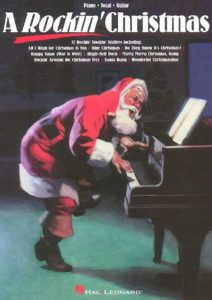 |
A Rockin’ Christmas Piano Vocal Guitar Contents — Rockin Christmas |
| A Single Man – George’s Waltz (Shigeru Umebayashi) | ||
| A Single Man – Stillness of the Mind (Abel Korzeniowski) | ||
| A Smooth Jazz Christmas – Mellow Seasonal Favorites for Piano arr. Roger House |
 |
A Smooth Jazz Christmas – Mellow Seasonal Favorites for Piano arr. Roger House |
| A Song For You – Leon Russell Ray Charles (Musescore File).mscz | ||
| A Star Is Born – Always Remember Us This Way Lady Gaga |
 |
|
| A Star Is Born – Shallow Lady Lady Gaga |
 |
|
| A Tale Of Two Sisters Ost – Epilogue Piano Solo |
 |
|
| A Thousand Years – Twilight OST (Christina Perri) | ||
| A Time For Love – Johnny Mandel |
 |
|
| A Time For Us – Guitar TABlature |
 |
|
| A Time For Us (Love Theme from Romeo and Juliet) Nino Rota |
 |
|
| A Time For Us (Romeo and Juliet OST) Nino Rota | ||
| A Touch Of Jazz 14 well-known hymns, gospel songs and contemporary praise songs by Wolaver Bill |
 |
A Touch Of Jazz 14 well-known hymns, gospel songs and contemporary praise songs by Wolaver Bill |
| A Tribute To Ella Fitzgerald Piano Vocal Guitar |
 |
A tribute to ELLA FITZGERALD |
| A Walk To Remember – Only Hope | ||
| A whiter shade of pale – Procul Harum | A whiter shade of pale – Procul Harum | |
| AaRON U-turn Lili Piano |
 |
|
| Ab Ovo – Joep Beving (Musescore File).mscz | ||
| Abba – Abba Gold – Greatest Hits |
 |
ABBA Gold Geatest Hits booksong sheet music |
| Abba – Chiquitita | ||
| Abba – Dancing Queen | ||
| Abba – Fernando | ||
| Abba – I Have A Dream | ||
| Abba – Like An Angel Passing Through My Room | ||
| Abba – Mamma Mia | ||
| Abba – Slipping Through My Fingers | ||
| Abba – Thank You For The Music | Abba-Thank-You-For-The-Music 1st page | |
| ABBA – Thank You For The Music (Piano Vocal Guitar) | ABBA – Thank You For The Music (Piano Vocal Guitar) | |
| ABBA – Thank You For the Music (Piano vocal Guitar) (Musescore File).mscz | ||
| Abba – Thank You For The Music Piano & vocal | Abba – Thank You For The Music-abba-satb | |
| Abba – The Winner Takes It All | ||
| ABBA Dancing Queen Easy Piano Solo |
 |
|
| ABBA Fernando (Piano Solo arr.) |
 |
|
| ABBA Fernando (Piano Solo arr.).mscz | ||
| ABBA Greatest Hits |
 |
ABBA GREATEST HITS SHEET MUSIC BOOK |
| ABBA I Have A Dream |
 |
|
| Abba The Very Best Vol 1 Easy Piano Hans Gunter Heumann Pop Classics For Piano |
 |
Abba The Very Best Vol 1 Easy Piano |
| Abba The Very Best Vol 2 Easy Piano Hans Gunter Heumann Pop Classics For Piano |
 |
Abba The Very Best Vol 2 Easy Piano |
| Abbey Lincoln Songbook |
 |
Abbey Lincoln Songbook |
| Abbey Lincoln Songbook Piano Vocal Guitar Chords |
 |
Abbey Lincoln Songbook Piano Vocal Guitar Chords |
| Abdullah Ibrahim – The Piano World Of |
 |
Abdullah Ibrahim, The Piano World Of |
| Abdullah Ibrahim The African Piano Of Abdullah Ibrahim Vol 1 |
 |
Abdullah Ibrahim The African Piano Of Abdullah Ibrahim Vol 1 |
| Abdullah Ibrahim The Wedding (piano solo transcription sheet music, partition) |
 |
|
| Abel Korzeniowski – Death Is My Heir (from Romeo and Juliet) |
 |
|
| ABRSM Jazz Piano Pieces Grade 1 to 5 |
 |
ABRSM Jazz Piano Pieces Grade 1 to 5 ABRSM Jazz Piano Pieces Grade 5ABRSM Jazz Piano Pieces Grade 5 |
| ABRSM Piano Exam Pieces Grade 1 (2016) |
 |
ABRSM Piano Exam Pieces Grade 1 (2016) |
| ABRSM Piano Scales, Arpeggios Grade 8 |
 |
|
| ABRSM Piano Scales, Arpeggios and broken chords Grade 1 |
 |
|
| ABRSM Piano Scales, Arpeggios and broken chords Grade 4 |
 |
ABRSM Piano Scales, Arpeggios and broken chords Grade 4 |
| ABRSM Piano Scales, Grade 2 A Guide for Students and Teachers | ABRSM Piano Scales, Grade 2 A Guide for Students and Teachers | |
| ABRSM – Time pieces for guitar vol. 1 |
 |
|
| ABRSM – Time pieces for guitar vol. 2 |
 |
|
| ABRSM 2017 18 Piano Exam Pieces Grade 1 |
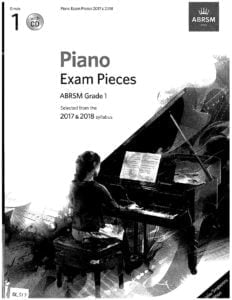 |
ABRSM 2017 18 Piano Exam Pieces Grade 1 |
| ABRSM 2017 18 Piano Exam Pieces Grade 2 |
 |
ABRSM 2017 18 Piano Exam Pieces Grade 2 |
| ABRSM 2017 18 Piano Exam Pieces Grade 3 |
 |
|
| ABRSM 2017 18 Piano Exam Pieces Grade 4 |
 |
|
| ABRSM 2017 18 Piano Exam Pieces Grade 5 |
 |
|
| ABRSM 2017 18 Piano Exam Pieces Grade 6 |
 |
|
| ABRSM 2017 18 Piano Exam Pieces Grade 7 |
 |
|
| ABRSM 2017 18 Piano Exam Pieces Grade 8 |
 |
|
| ABRSM 2021-2022 Piano Exam Pieces Grade 1 |
 |
|
| ABRSM 2021-2022 Piano Exam Pieces Grade 2 |
 |
|
| ABRSM 2021-2022 Piano Exam Pieces Grade 3 |
 |
|
| ABRSM 2021-2022 Piano Exam Pieces Grade 5 |
 |
|
| ABRSM 2021-2022 Piano Exam Pieces Grade 6 |
 |
|
| ABRSM 2021-2022 Piano Exam Pieces Grade 8 |
 |
|
| ABRSM 2021-2022 Piano Exam Pieces Initial Grade |
 |
ABRSM 2021-2022 Piano Exam Pieces Initial Grade |
| ABRSM Aural Training In Practice Book 1 Grades 1 to 3 |
 |
|
| ABRSM Aural Training In Practice Book 2 Grades 4 and 5 |
 |
|
| ABRSM Discovering Music Theory (Complete) Grades 1 to 5 Workbook by Simon Rushby (2020 Exams) |
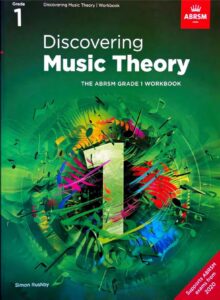 |
ABRSM Discovering Music Theory (Complete) Grades 1 to 5 Workbook by Simon Rushby (2020 Exams) contents |
| ABRSM Erster Verlust Grade 4 ABRSM Piano Exam Pieces 2021 & 2022 |
 |
|
| ABRSM Etude In A Minor – Dmitry Kabalevsky ABRSM Grade 4 Piano Exam Pieces 2021 & 2022 |
 |
|
| ABRSM Grade 2 – Inter-City Stomp byChristopher Norton From Microjazz Collection (Sheet Music) |
 |
|
| ABRSM Initial Grade Piano Exam Pieces 2023 2024 |
 |
|
| ABRSM Minuet and Trio D 41 No 21 – Franz Schubert ABRSM Grade 4 Piano Exam Pieces 2021 & 2022 |
 |
|
| ABRSM More Music Theory Sample Papers Grade 5 For New Format |
 |
|
| ABRSM Music Theory In Practice, Grade 1 (Eric Taylor) |
 |
|
| ABRSM Music Theory In Practice, Grade 2 (Eric Taylor) |
 |
|
| ABRSM Music Theory Past Papers Grade 1 2004 |
 |
|
| ABRSM Music Theory Past Papers Grade 4 2016 |
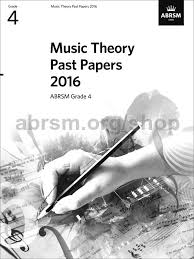 |
|
| ABRSM Music Theory Past Papers Grade 5 2012 |
 |
|
| ABRSM Music Theory Past Papers Grade 6 2013 |
 |
|
| ABRSM Nikki Iles Danny Boy ABRSM Piano Exam Grade 8 2023 Jazz Piano arr. inspired by Bill Evans |
 |
|
| ABRSM Nikki Iles Friends Book 1 Intermediate Jazz Pieces For Piano |
 |
ABRSM Nikki Iles Friends Book 1 Intermediate Jazz Pieces For Piano |
| ABRSM Nikki Iles Friends Book 2 Intermediate To Advanced Jazz Pieces For Piano |
 |
ABRSM Nikki Iles Friends Book 2 Intermediate To Advanced Jazz Pieces For Piano |
| ABRSM Nikki Iles The Elephant Parade ABRSM piano Exam |
 |
|
| ABRSM Piano 2025-2026 Grade 8 C3 A Nightingale Sang in Berkeley Square by Sherwin – Maschwitz |
 |
|
| ABRSM Piano Exam 2007-2008 Grade 3 |
 |
|
| ABRSM Piano Exam 2015-16 Grade 3 |
 |
ABRSM Piano Exam 2015-16 Grade 3 |
